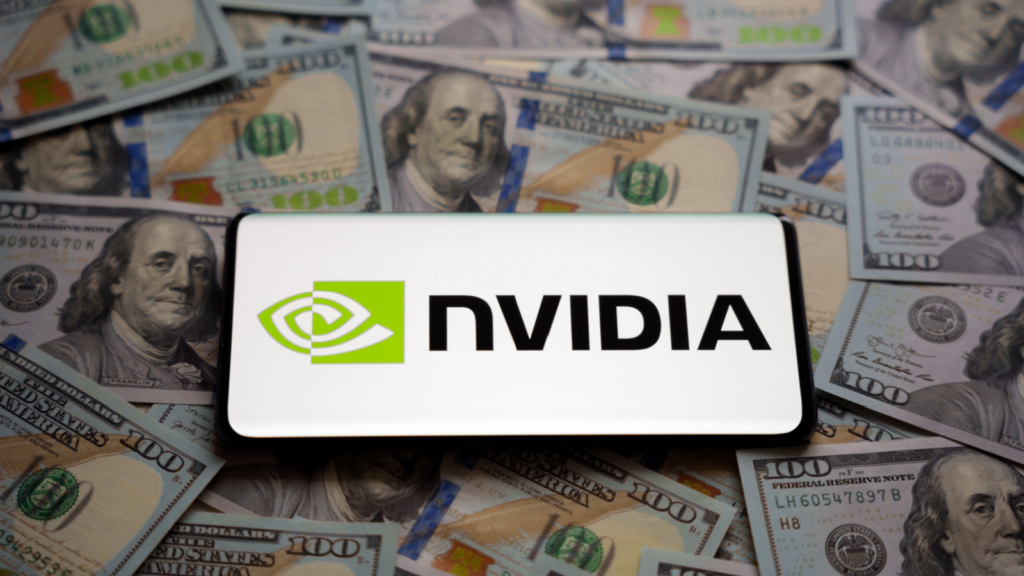
Semiconductor and AI behemoth Nvidia stock (NASDAQ:NVDA) isn’t even close to being done innovating with its core product and services portfolio. The maker of high-performance chips and AI-related software is seeing record demand, bolstering its top- and bottom-line growth metrics, and delivering whopping returns for investors.
The stock more than tripled last year, and is already up roughly 80% this year. That’s the kind of growth compounding most investors would like to see over the course of decades in a given position. Indeed, Nvidia has provided that kind of growth – the kind where one decade’s worth of innovation and growth can happen in a given year.
The artificial intelligence boom is for real, and Nvidia stock remains the way to play this trend. Here’s why I think this company could be worth paying up for, particularly on dips moving forward.
Blackwell Platform Launched
Nvidia recently introduced the Blackwell platform at its GTC conference, revolutionizing computing with real-time generative AI at a fraction of the cost and energy usage. Featuring six cutting-edge technologies, Blackwell unlocks advancements in various industries, from data processing to quantum computing. CEO Jensen Huang sees Blackwell as pivotal for AI’s widespread adoption, with major companies like Amazon (NASDAQ:AMZN) Web Services and Alphabet (NASDAQ:GOOG, NASDAQ:GOOGL) expected to embrace it.
Blackwell introduces six groundbreaking technologies, facilitating AI training and real-time inference for models with up to 10 trillion parameters. It boasts the world’s most powerful chip, with 208 billion transistors and a custom-built 4NP TSMC process, connecting GPU dies via 10 TB/second chip-to-chip links. The Second-Generation Transformer Engine doubles compute and model sizes, supporting 4-bit floating point AI inference.
Additionally, the company’s Fifth-Generation NVLink offers 1.8TB/s bidirectional throughput per GPU for seamless communication among up to 576 GPUs. Blackwell’s RAS Engine ensures reliability, availability, and serviceability, while Secure AI safeguards models and data with advanced confidential computing capabilities.
Lastly, a dedicated decompression engine accelerates data analytics and science, enhancing performance in GPU-accelerated data processing.
Analysts Are Optimistic on NVDA Stock
Before the conference, Truist analyst William Stein boosted Nvidia’s price target from $911 to $1,177, anticipating heightened chip demand in 2024 and 2025. Additionally, HSBC analysts upped their price target from $880 to $1,050, maintaining a buy rating. Bank of America analysts revised their price target to $1,100 from $925.
Post-conference, UBS analyst Timothy Arcuri upgraded Nvidia’s target price to $1,100 from $800, affirming a buy rating. Arcuri suggested that with Blackwell’s launch, Nvidia could tap into new global enterprise and sovereign demand.
Nvidia’s data center revenue reached $47.5 billion in 2024, with expectations to even reach a bigger number in the years to come. Analysts also anticipate to see the company hit a $300 billion revenue three years from now. With the upcoming B200 Blackwell chip promising enhanced capabilities at competitive pricing, Wall Street firms have raised Nvidia’s price targets accordingly.
Bullish All The Way
Nvidia stock unveiled plans for new AI GPUs based on its cutting-edge Blackwell architecture in 2024. These chips promise substantial performance boosts with lower power consumption. Nvidia anticipates widespread adoption by cloud computing providers and aims to expand its presence in the $250 billion GPU market.
If Nvidia achieves a discounted 50-times earnings multiple, and reaches $25 per share in earnings, its stock price could surge to $1,250, marking a 33% jump from present levels. This projection surpasses the Street’s highest price target. Moreover, Nvidia might see even more significant gains if the market values it with a higher earnings multiple due to its exceptional growth.
On the date of publication, Chris MacDonald did not have (either directly or indirectly) any positions in the securities mentioned in this article. The opinions expressed in this article are those of the writer, subject to the InvestorPlace.com Publishing Guidelines.




